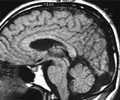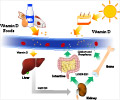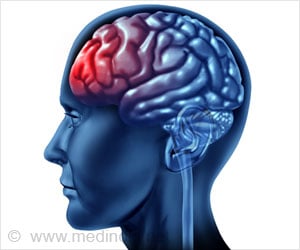A new study reveals that patients, who have gland disorder causing excessive calcium in blood and have a vitamin D deficiency, can receive vitamin D treatment safely.

"These patients need close monitoring every three to four months during vitamin D replacement therapy," said Dima Abdelmannan, MD, an assistant professor at Case Western Reserve University in Cleveland and an endocrinologist at Cleveland Veterans Affairs (VA) Medical Center.
Abdelmannan, who presented the research findings, said doctors should measure blood levels of calcium and parathyroid hormone along with vitamin D levels throughout treatment.
"Measuring vitamin D levels alone may not be helpful in the management of vitamin D deficiency in patients with primary hyperparathyroidism," she said. "The commercially available blood test for vitamin D level—the 25-hydroxyvitamin D—has limitations."
For this study, Abdelmannan and colleagues reviewed the medical records of 32 patients at the VA Medical Center who had both primary hyperparathyroidism and vitamin D deficiency. All 10 women and 22 men had hypercalcemia, or high calcium in the blood, defined as a level greater than 10.1 milligrams per deciliter (mg/dL). They also had vitamin D levels below the cutoff for normal of 30 nanograms per deciliter (ng/dL) on the 25-hydroxyvitamin D test for vitamin D.
Patients received either vitamin D2 (ergocalciferol) or vitamin D3 (cholecalciferol) at an average daily dose of 3,630 International Units, or IU. Most patients had their parathyroid hormone, calcium and vitamin D levels checked every three months for a year after vitamin D treatment.
Advertisement
Hyperparathyroidism develops in approximately 100,000 Americans every year and affects twice as many women as men, according to the National Institutes of Health. The risk increases with age. Although the disorder usually has no symptoms, if calcium levels are very high, it can cause bone aches, tiredness and kidney stones, Abdelmannan said.
Advertisement
Source-Eurekalert















